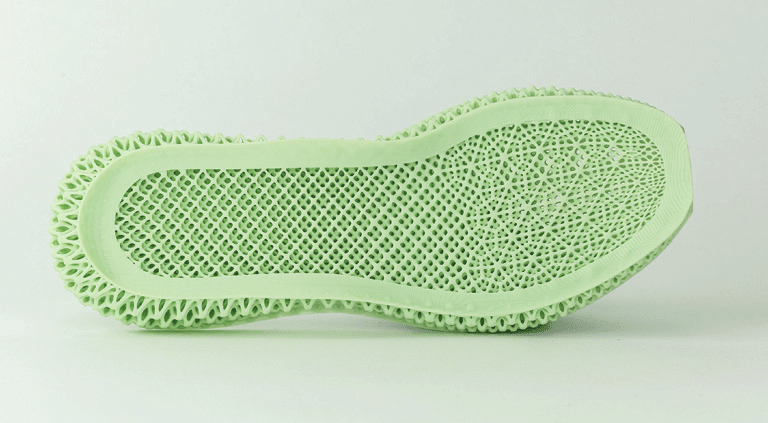Inside the Future: Engineering Performance with Mark Henderson
Our team had the pleasure of having Mark back in Mount Maunganui to speak at the Sports Performance Innovation Forum, which was hosted by our team as part of the Groundswell Festival of Innovation. Mark takes us ‘behind the scenes’ of his career story and some of Adidas Future Lab’s most game-changing projects.
Mark Henderson is a Tauranga old boy and University of Canterbury alumni. As a graduate, he recounted how he went to an interview at a petro-chemical company. When they asked him “why do you want to work here?” the only thing he could think of was how much he really didn’t want to work there. So like most kiwis, he took off on his OE.
From this early start his work experience ranged from shaping surfboards in Australia, working at a kebab shop, to counting the cars parked in bus lanes in London. Once he started to count cars in his sleep, it was time to get serious and that was the moment when he entered a couple of simple yet special words into Google search, looking for a role that connected two things he loved: engineering and sport. To his surprise he found an internship role being advertised at Adidas in Germany. Almost 17 years later, he is now the Senior Engineering Director for the Future team at Adidas, based in Portland, Oregon. What is the lesson here? Chase your passion and when an opportunity arises, work your butt off. That is what Mark did.
The Future team explore and work on game-changing ideas 3-7 years out from the market. How cool is that! Mark explained this work to be like being on a train going full steam ahead, while you are building the very train tracks at the same time. The projects Mark and the future team have worked on include Adidas 1, the world’s first intelligent shoe; Adidas prime SP, the lightest sprint spike ever, the famous Boost foam, and most recently the industry changing Futurecraft 4D printed shoe and the Futurecraft Loop single material recyclable shoe.
Boost Foam
An interesting experience Mark shared was about the early days of Boost foam, undoubtedly one of the athletic footwear industry’s big material innovations in recent memory. The story goes something like this:
The Future team discovered a foam that performed extremely well in terms of energy return, Mark’s team studied its mechanical properties and to their surprise it was off the charts. Engineering knew it was unique and the Sports Science team believed it offered an edge. The problem was they all thought it lacked on aesthetics - it looked a bit like polystyrene. They thought this pellet-like appearance wouldn’t be desirable to consumers so they began trying different methods of hiding the look of it. (This can be a common consideration when looking to launch any new breakthrough material that differs from the known normal). Somewhere in the process though they started to notice that the whole team was wearing Boost prototype shoes every day; a clear sign the comfort of these shoes was winning out. This observation along with many others led the team back to simplicity, decided to embrace the technology for what it is rather than what they thought people would like. To honour the truth of the material. Adidas had the confidence to trust the adage that "form follows function' - and it paid off. They now have a product with a unique look and signature that they can claim as their own innovation in footwear. Adidas credit Boost as a key defining point for who Adidas is today, and the company now produce over 100 million Boost shoes per year.
One of the attendees at the event questioned whether the consumer can really notice the fact that Boost foam has technically superior energy performance. This brought up a really interesting point about the significant role perception plays in their products. At Adidas, they define an athlete as anyone who wants to get better. A big part of the athletic apparel and equipment athletes buy, is not just about its functional role, but delivering confidence. A feeling of being able to walk into competition or training with greater confidence, and of having the perception of achieving greater results. It’s not always about how much a product statistically improves performance, but the fact of whether it makes the athlete feel like it does.
James Harden Basketball shoe
Designing a basketball shoe is complex business. In February this year, another big athletic brand took a hit to their share price after one of their shoes disintegrated mid match, causing their young basketball superstar to fall to the floor clutching his knee. This is worst case scenario for the player and the developers in the sport shoe industry.
Basketball shoes are unique and challenging due to the degree of load and strain that is put on the upper with the sport’s fast paced stopping and pivoting motion.
Adidas use technology and high-res data to combat this, including one key method they developed and applied to footwear called Digital Image Correlation. The development team get a marker and cover the shoe with random speckled dots. They then set up cameras and get the athlete to move around and use the product; in this case it was James Harden for the development of his signature shoe.
The development team then use this video recorded footage to measure the stresses applied during the specific movements for the specific sport to understand the load forces and to measure strength and durability. This method allows them to measure the degree of strain/load through displacement and orientation change of the dots through digital correlation of images, as well as the direction of the strain, in order to better optimise the shoe. This means they could intelligently design a shoe quickly that was strong where it needed to be strong, and flexible where it needed to be flexible.
Mark shared a story about how they had James Harden in the lab, using the Digital Image Correlation technique to test the shoe. James Harden loved the shoe so much, that the lab speckle shoe appeared on the court the following night. An ultimate milestone for any developmental project.
3D + You = 4D
What’s the future of Adidas? A big part is 4D.
4D is 3D (manufacturing) + YOU (the individual athlete). It’s all about customisation and tuning shoes for the individual athlete by data driven design. Think how many people wear a size 9 shoe. That doesn’t mean they necessarily should be wearing the same shoe. Imagine shoes that are no longer one size fits all, but are personalised to the data of the individual athlete.
Adidas’s Futurecraft 4D idea is to create shoes with variable properties across the midsole* to improve shoe performance - this presents a significant challenge. Think about a typical foam midsole; the whole midsole generally has the same properties and performance across it. (*The midsole is the thicker, shock absorbing layer between the inner and outside sole of the shoe). It’s challenging to make midsoles via compression or injection moulding in one piece with properties that vary across the part. In order to create a midsole with varied performance zones, currently it requires the assembly of multiple parts. This presents a challenge as it’s an intensive process and also introduces multiple potential points of failure.
To solve this, Adidas looked towards 3D printing as a possible way to unlock some design freedom in midsoles. 3D printing has previously been used mostly for prototyping products in development, before they are produced with traditional manufacturing methods. What Adidas encountered were prints that were painfully slow, required wasteful part supports that get thrown out, and found the materials used inferior to those used for production, resulting in weak and brittle parts.
This meant that this goal was ‘parked’ by the Future team, awaiting advancement in 3D printing technology as the 3D printing industry lacked the production-grade needed by Adidas. Then Adidas came across Carbon, an additive printing start up based in the Bay Area and an exciting partnership was formed.
Carbon’s Digital Light Synthesis (DLS) technology overcomes the previous barriers faced; their technology is high speed and can use high-performance materials that met the needs for a high-performance athletic shoe. Carbon DLS technology fuses light and oxygen to rapidly produce polymer products from a pool of resin. Essentially, they project light on liquid resin and it sets where the light shines. Carbon made it possible to produce parts with unmatched quality, as well as volumes and speeds that were never before possible.
3D Printing allows Adidas to create a midsole with varied performance, in one piece. The lattice structure can be adjusted in different areas to address specific needs of movement, cushioning, stability, and comfort, into one simple, high-performance component. The latest product in the Futurecraft 4D line, is the AlphaEDGE 4D. However this is only just the beginning. This technology could be used to create custom shoes, where the midsole is printed to the personal needs of the athlete. Imagine a future where every square mm of the midsole could be engineered to react to the athlete's individual movements.
Technology is enabling innovation at a very fast pace in this sector. Now that 3D printing has become affordable and of high enough quality on a mass production scale, it paints a big future shift in the design of shoes.
Making to be remade
Mark shared that a key focus at Adidas is recognising the impact their products have on the world. Environmental impact and sustainability is paramount when you produce over 400 million shoes a year.
Futurecraft Loop is clear expression of their intent and mission to move towards a cleaner, more circular economy. Loop is the company’s exploration and endeavour to adopt a closed loop, circular manufacturing model. The Loop shoe is ‘made to be remade’; to be re-manufactured and re-purposed again and again into another pair of high performance running shoes.
This seems straightforward right, but this is an immense achievement and challenge. It’s virtuosity in action.
The fundamental challenge to realise here is that the typical running shoe offered today by all brands uses 12 to 15 different materials in its construction. This means that each material needs to be separated before the shoe could even be considered for recycling so one material family doesn’t contaminate the recycling process of another. Further, traditional uppers and midsoles are bonded together with adhesives, which can also contaminate material flows making some parts unfit for recycling.
What Adidas have managed to do is create the Futurecraft Loop from a single polymer - TPU or Thermoplastic Polyurethane. With Loop, the whole shoe from the sole to the upper and laces (everything!) is made out of this one single material. What is insane is each component still embodies the specific performance properties that that part of the shoe requires. Adidas made all this possible by developing a method to fuse the shoe without glue. So by now you might be thinking what is the benefit? Well this allows the entire shoe to be ground up and melted back into a raw material, in a single process! A world first delivered at a seminal point in human history as we begin to reverse climate change by design.
This breakthrough also asks a question to other players in the fashion and apparel space; how will this design impact on other consumer product industries? If this type of closed loop offering becomes ‘fashionable’, how might this change the shape of the industry as a whole?
Adidas currently has 200 pairs of Loop shoes being used around the world, which will be returned, and then ground, heated and reused to make a second edition of Loop which will again be tested. The insights from this process will be used to shape the roadmap for the wider release targeted for 2021.
This breakthrough holds the potential to be Adidas' future business model, which is the complexity Adidas still has to work though. It is a significant shift.
Mark’s mentality is that they just have to get out there and try, and be comfortable with the fact they will not get it perfect the first time. In many ways this is the purpose of the whole Futurecraft program at Adidas. It’s a way for the organisation to clearly express its intent early and challenge itself to live by its core mission statement. This is something many organisations could embrace and use as inspiration to drive their own internal innovation incubators and new ventures.
Special thanks to Mark for your involvement and support in this year’s SPI Forum.





